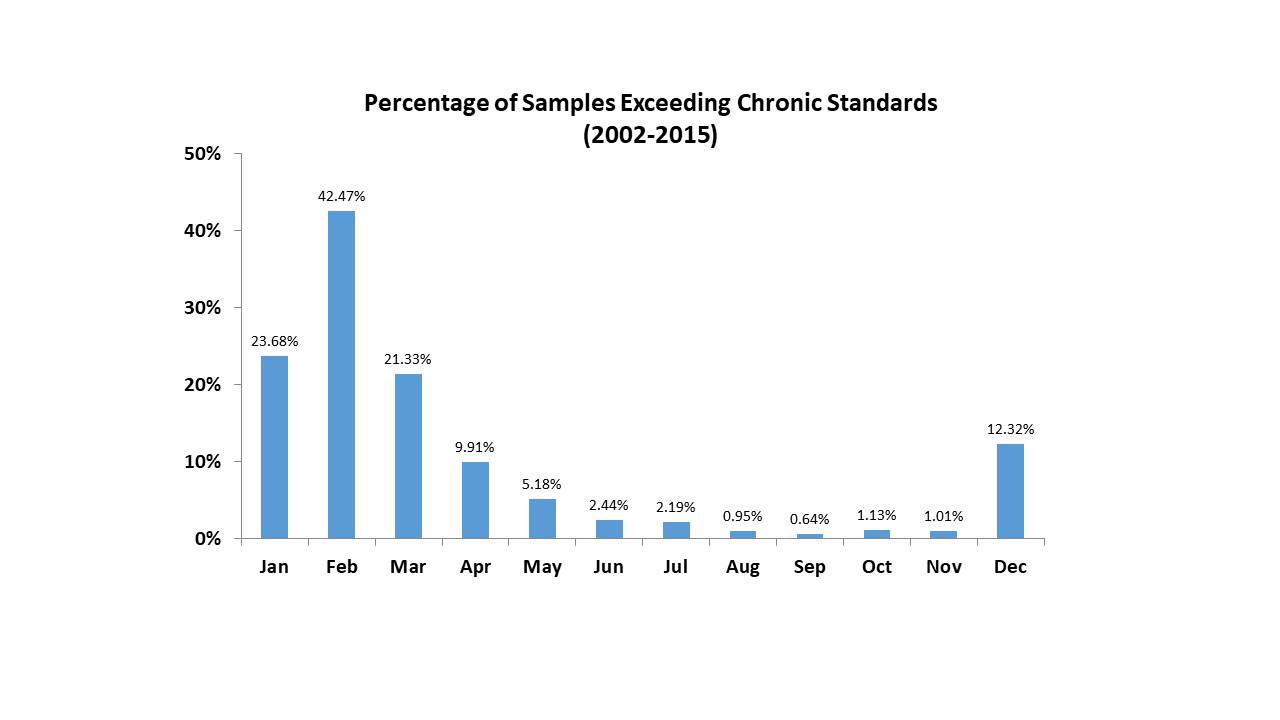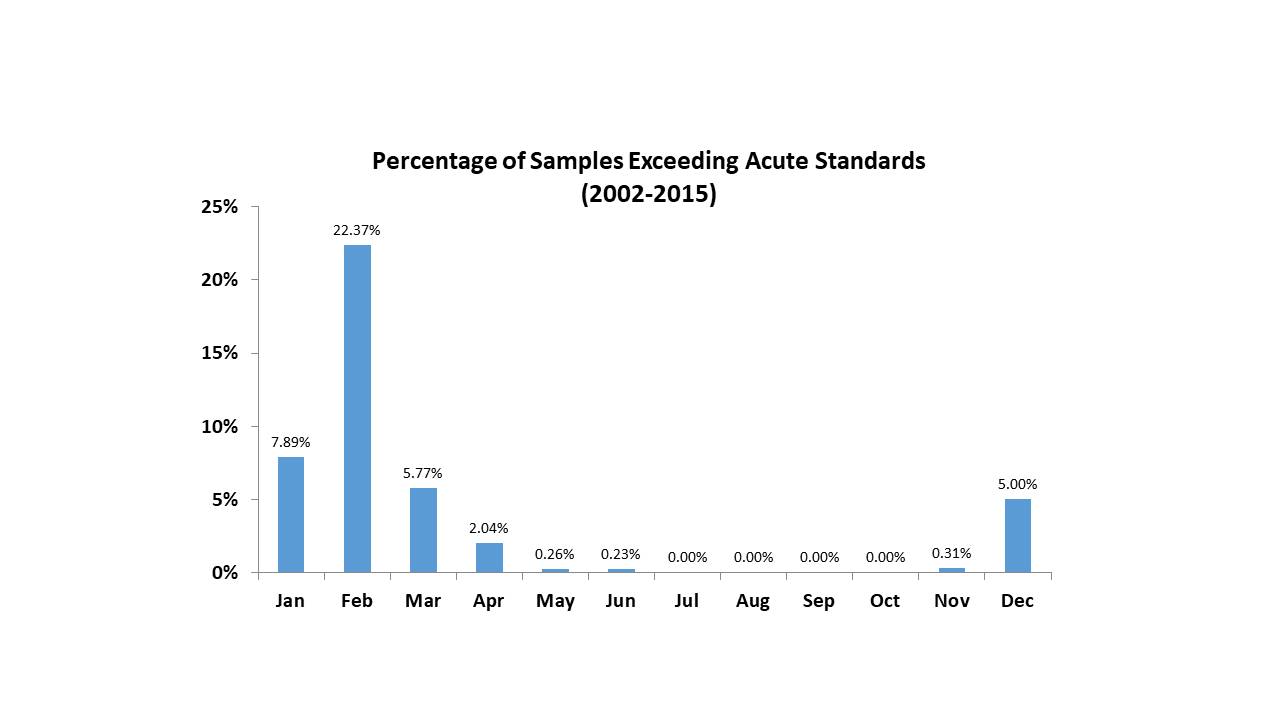Road Salt in our Rivers
Road salt poses a very real threat to our waterwaysDeicers, like road salt, make our roads safer during the winter, but overapplying salt can pose a very real threat to the health of our rivers and environment.
Water runs over the landscape after precipitation and melting events and picks up chemicals and pollutants along the way. Pollutants, like chloride-based deicers, eventually end up in rivers, streams, and lakes and negatively impact water quality, aquatic life, vegetation, soil, pets, wildlife, roads, and vehicles.
Water Quality and Aquatic Life
Excess road salt damages aquatic ecosystems. The accumulation of chloride in our waterways limits the survival and reproduction of aquatic organisms and degrades water quality of our groundwater, lakes, and streams.
Vegetation and Soils
Excess salt also damages soils and impedes plant growth when it runs off of roads and sidewalks and prevents the intake of water.
Pets and Wildlife
Pets and wildlife think road salt is tasty! Road salt can make animals sick if ingested directly or from licking paws. Many road salt additives, such as de-clumping agents, contain cyanide. Road salt attracts pets and wildlife, which puts animals and humans in harm’s way of potential collisions.
Roads and Vehicles
Every year, road salt costs us billions of dollars worth of damages and repairs to vehicles, roads, and other steel and concrete infrastructure across the US.
Putting our Three Rivers on a Low Salt Diet
Since 2010, Milwaukee Riverkeeper has worked with U.S. Geological Society (USGS) to monitor chloride levels in many of our local rivers and streams.
In 2015, Fund for Lake Michigan supported our road salt monitoring program expansion to deepen our understanding of the local impacts of road salt application and to boost community awareness of the issue.
In 2016–2017, 20 volunteers helped Milwaukee Riverkeeper monitor 29 river locations for chloride and conductivity. Our volunteer monitors collect conductivity data on days following trigger events when large amounts of runoff are expected due to precipitation or melting.
In 2017 2018, Milwaukee Riverkeeper is working with 17 volunteers to monitor 17 more river locations.
Milwaukee Riverkeeper also presents the results of our road salt monitoring program and the negative impacts of road salt on our waterways throughout the Milwaukee River Basin.
Chloride Levels in the Milwaukee River Basin
The Environmental Protection Agency (EPA) defines impaired waters as waterways that are considered to be too polluted or otherwise degraded to support local communities and or ecosystems. In Wisconsin, waterways that exceed chloride standards of 395 mg/L for four days (chronic toxicity) or 757 mg/L (acute toxicity) on two separate occasions are considered to be impaired. These standards are based on tolerance levels of aquatic ecosystems in Wisconsin. At these chloride levels, native aquatic organisms are less likely to forage and reproduce.
Our monitoring results indicate large amounts of salt enter our rivers as runoff during winter months. Sites throughout the Milwaukee River Basin frequently reach chloride levels toxic to aquatic ecosystems from December to March. As a result of our monitoring data, four stream segments were listed for chloride impairments by the Department of Natural Resources. Organisms living in stream segments impaired by chloride are less competitive, less active, reproduce less, and are more likely to experience die-offs.
Locally Impaired Waters
The data that our volunteer collect is valuable as a tool for understanding where our rivers are struggling with chloride exceedances, how frequently those events are occurring, and to what extent. Comparing locations that are struggling with high levels of chloride to those that aren’t will help us speculate what factors might be influencing those conditions.
Our 2016-2017 road salt monitoring data identified nine stretches of streams that should be added to the impaired waters list based on state standards for chloride:
- Oak Creek Airport Tributary
- Crestwood Creek
- North Branch Oak Creek
- Beaver Creek
- Indian Creek
- Noyes Creek
- Southbranch Creek
- Honey Creek
- Brown Deer Park Creek
Our three rivers need a low salt diet – join us!
Milwaukee Riverkeeper is working to determine if chloride concentrations from road salt are reaching harmful levels. Road salt monitors are needed to help collect data for this research. Sampling typically takes place within 48 hours after events that trigger road salt use such as large snowfalls and snowmelts.
We host an annual workshop on snow and ice control best practices for private contractors in an effort to reduce impacts of road salt to local water quality! You’ll learn state of the art winter maintenance practices, including how to transition to liquid deicers, to reduce overall salt application to parking lots, driveways and sidewalks.

Thanks to our funders for their generous support of this program!


